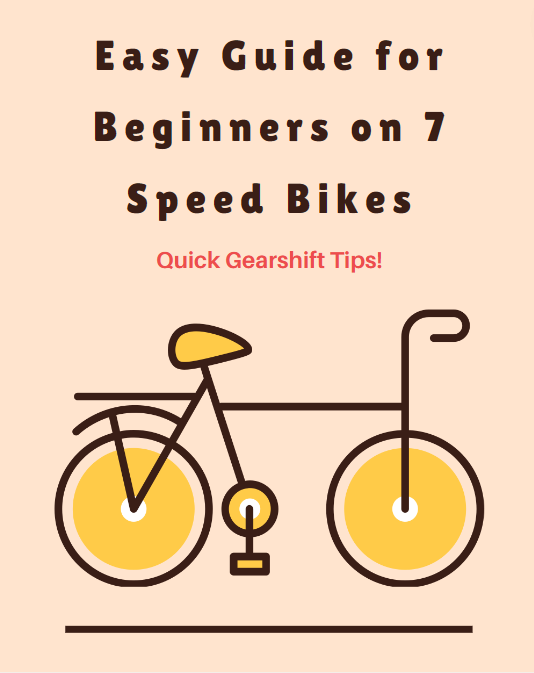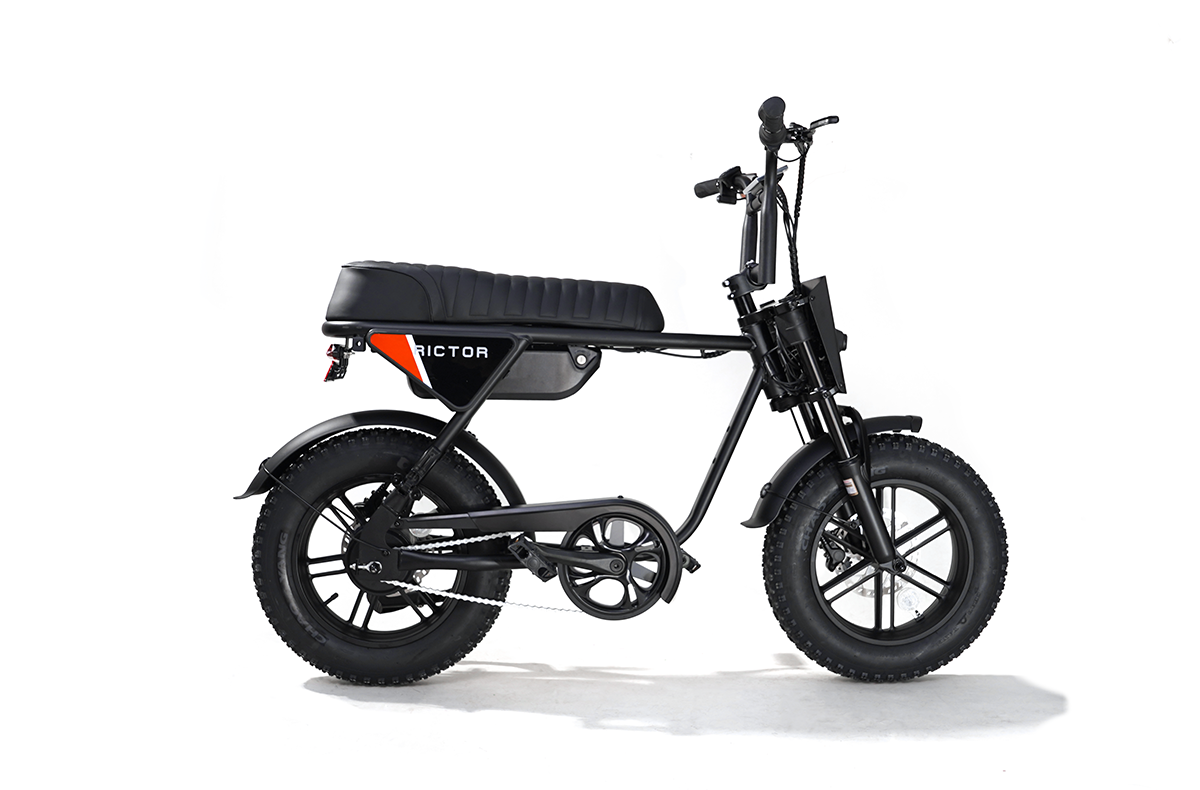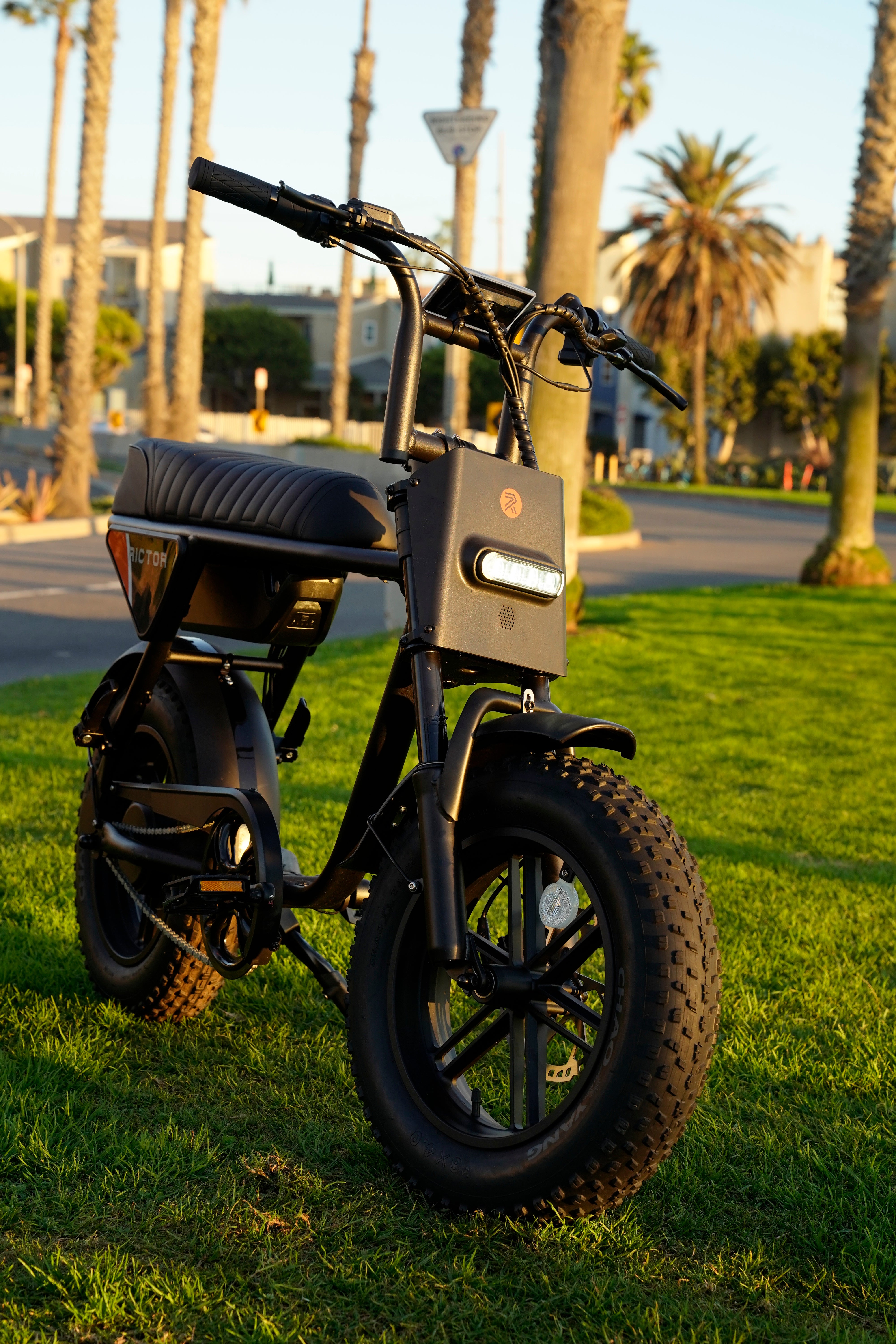
Quick Gearshift Tips! Easy Guide for Beginners on 7 Speed Bikes
Riding a bike is awesome—it’s a fun way to get fit, cruise around town, or just soak up some fresh air.
If you’ve got a 7-speed bike, you’re already set up for a smoother ride, but do you really know how to make the most of those gears?
No worries if you don’t! In this guide, we’re going to dive into the nitty-gritty of using and shifting gears on a 7-speed bike.
We’ll keep it simple and straightforward, so by the end, you’ll be shifting like a pro and ready to take on any road or trail that comes your way. Let’s get rolling!
What Does 7-Speed on Bike Mean
When we talk about a 7-speed bike, we're referring to a bike that comes equipped with seven different gears.
These gears let you adjust how much resistance you feel while pedaling, depending on whether you're tackling a steep hill, cruising on a flat road, or coasting downhill.
A typical 7-speed bike has a single chainring in the front and a cassette with seven cogs at the back.
Shifting gears moves the chain across these cogs, making it easier or harder to pedal.
Lower gears are great for climbing hills since they make pedaling easier, even if you're not moving as fast.
Higher gears, on the other hand, require more effort to pedal but allow you to go faster—perfect for flat roads or downhill rides. Plus, a 7-speed bike is easier to manage, especially for beginners.
Single-Speed Bikes
Single-speed bikes are about as straightforward as it gets. With just one gear, there’s no fussing with shifting—what you see is what you get.
These bikes are perfect for flat terrain, where the consistent gear ratio gives you a smooth, steady ride.
However, when you hit a hill, that’s where things get a bit tricky. Without multiple gears to choose from, you’ll need to put in a lot more effort to keep your momentum going.
Take Olympic track cycling, for example. These athletes race in velodromes—indoor tracks that are typically 250 meters long and feature steep, 45-degree banked turns.
The bikes they use are built for pure speed, with just one big gear and no brakes. Every pedal stroke counts because the pedals are always moving when the wheels are turning.
The bikes are super aerodynamic, with narrow tires, full disc wheels, and sleek frames.
Riders are decked out in skin-tight suits and helmets to reduce drag, and they even strap their feet in tightly to ensure they can put maximum power into every pedal.
While these single-speed track bikes are perfect for the controlled environment of a velodrome, let’s be real—they’re not exactly practical for everyday riding.
Most of us aren't gunning for gold in the Olympics, after all!

Multi-Speed Bikes
On the flip side, we have multi-speed bikes, like those with 21 or even 27 gears. These bikes offer a wide range of gear combinations, which is great for tackling all sorts of terrain.
Whether you're climbing steep hills, navigating rocky paths, or speeding down a descent, multi-speed bikes have you covered.
The extra gears give you more flexibility, allowing you to maintain a comfortable pedaling pace no matter what the road throws at you.
Mountain bikers love multi-speed setups because they can quickly shift gears as they encounter different obstacles, like steep climbs or technical descents.
The variety of gears helps them conserve energy and stay in control, no matter how challenging the trail is.
Similarly, long-distance cyclists appreciate the ability to fine-tune their gear choices over the course of a long ride, adapting to changes in terrain as they go.
For us regular folks, a 7-speed bike is more than enough to get the job done.

How Bike Gears Work
Think of gears as the link between your pedals and your rear wheel. You’ve got the chainring up front (the gear connected to your pedals) and the cogs in the back (those gears on the rear wheel).
When you shift gears, the chain jumps between these cogs, changing how much power you need to pedal and how far each pedal stroke takes you.
Low Gears (1-3): These are your go-to gears when the going gets tough, like when you’re climbing a steep hill or battling a headwind.
The chain moves to a bigger cog in the back, which makes pedaling a lot easier—though you won’t go very fast. It’s like putting your bike in “easy mode,” letting you keep a steady rhythm without wearing yourself out.
Mid Gears (4-5): These gears are all about balance.
Not too easy, not too hard—just right for those stretches of flat road where you want to keep a good pace without feeling like you’re in a race.
Mid gears give you a nice blend of speed and comfort, making them perfect for longer rides or when you’re just cruising along.
High Gears (6-7): When you’re ready to pick up the pace, high gears are perfect choice.
The chain shifts to a smaller cog, which means you’ll need to put in more effort to pedal, but you’ll cover more ground with each stroke.
These gears are great for flying down hills or speeding along flat roads when you want to feel the wind in your face.
To really make the most of your gears, try to think ahead. If you see a hill coming up, shift to a lower gear before you hit the incline—this way, you won’t lose momentum or burn out your legs halfway up.
On the flip side, when you’re about to coast down a hill or hit a flat stretch, shift up to a higher gear so you can pick up some speed.
💡And here’s a little tip: when you’re shifting gears, try to ease off the pedals a bit.
This makes the gear change smoother and keeps your bike’s drivetrain happy. With a little practice, you’ll be shifting gears like a pro, making every ride as smooth as possible.
And if you're really looking to take your rides to the next level, consider the Rictor K1 electric bike 🚴♂️. With its effortless gear shifting and powerful motor, you can breeze through any terrain and enjoy faster, longer rides without breaking a sweat.
Is Gear 1 High or Low? All Gears Explained
Understanding how each gear functions is crucial for effective cycling. On a 7-speed bike, the gears are numbered from 1 to 7, with gear 1 being the lowest and gear 7 the highest. Here’s a clear explanation of what each gear is used for and when to use it:
Gear 1: This is the lowest gear, which makes pedaling easier but results in slower speeds. It’s ideal for climbing steep hills or starting from a complete stop, as it reduces the amount of effort required to get the bike moving.
Gears 2-3: These gears are still considered low gears, offering slightly more speed while keeping pedaling relatively easy. They are useful for moderate inclines or when you want to maintain a comfortable pace without exerting too much effort.
Gears 4-5: These are the mid-range gears, perfect for riding on flat terrain. They provide a good balance between speed and effort, allowing you to maintain a steady pace without overworking your legs.
Gears 6-7: These are the high gears, requiring more effort to pedal but allowing you to achieve higher speeds. These gears are best used on flat terrain when you want to increase your speed or when descending.
How to Use Gears When Cycling
Using gears effectively can really enhance your cycling experience, making your ride smoother, more comfortable, and a lot more fun. Here’s how to get the most out of your 7-speed bike:
Start in a Low Gear
When you’re starting from a stop, it’s best to begin in a low gear, typically in the 1-3 range.
Low gears make it much easier to get the bike moving, especially if you’re on an incline or carrying some extra weight.
It reduces the strain on your legs and helps you pick up momentum gradually without having to push too hard right off the bat.
Shift to a Higher Gear on Flat Terrain
Once you’ve gained some speed and are cruising along on flat terrain, it’s time to shift to a mid or high gear (4-7).
Higher gears allow you to maintain your speed without exhausting yourself. You’ll be able to cover more ground with each pedal stroke, making your ride more efficient. It’s a great way to keep your energy levels steady on longer rides, too.
Use Low Gears on Hills
Hills can be a challenge, but using your gears correctly makes a big difference. As you approach a hill, shift to a lower gear before you start climbing.
This way, you’ll be prepared for the incline and won’t lose momentum or feel like you’re struggling.
The lower gears make it easier to pedal uphill by reducing the resistance, so you can keep a steady pace all the way to the top.
Anticipate Terrain Changes
One of the key tricks to using gears effectively is to anticipate changes in the terrain.
Always try to shift gears before you actually need them.
For example, if you see a hill coming up, shift to a lower gear as you approach it, rather than waiting until you’re halfway up and feeling the burn.
This proactive approach helps you maintain control and keep your ride smooth and consistent.
Can We Start a Bike in Any Gear
Technically, you can start your bike in any gear, but it’s generally much easier to start in a low gear, especially if you’re on an incline.
Starting in a higher gear requires a lot more effort and can make it tough to get the bike moving, particularly if you’re just getting started with cycling.
To avoid unnecessary strain, always downshift to a lower gear before you come to a stop.
That way, when you’re ready to start pedaling again, you’ll have an easier time getting going.
When to Shift Different Gears
Knowing when to shift gears can really make your ride more comfortable and enjoyable:
Shift Down When Slowing Down: If you’re approaching a stop sign, a traffic light, or a hill, shift to a lower gear as you slow down. This makes it easier to get moving again once you’re ready to start pedaling.
Shift Up When Gaining Speed: As you accelerate, whether on flat terrain or going downhill, gradually shift to a higher gear.
This helps you maintain your speed without overexerting yourself.
Remember, you want to keep your pedaling smooth and consistent, not too fast and not too slow.
Shift Gradually: Avoid the temptation to jump through multiple gears all at once. Shifting one gear at a time keeps you in control and prevents putting too much strain on your bike’s chain and gears.
It’s all about making smooth, gradual adjustments that match your speed and the terrain.
Do You Stop Pedaling When Changing Gears
Ideally, you should keep pedaling while changing gears, but with less force. Lightening up on the pedals while you shift helps the chain move smoothly to the next cog, reducing wear and tear on your bike.
Just make sure not to stop pedaling entirely or backpedal while shifting, as this can cause the chain to slip or even derail, which is something you definitely want to avoid.
By getting familiar with your bike’s gears and practicing these techniques, you’ll find that your rides become more enjoyable and less physically demanding.
With time, shifting gears will become second nature, allowing you to focus more on enjoying the ride and less on the mechanics.
Conclusion
Now that you’ve got the basics down, it’s time to put your knowledge into action. Hop on your bike and start practicing those gear shifts. The more you ride, the smoother your shifting will become, and the more enjoyable your cycling experience will be. So, get out there and give it a try!
FAQs
How often should I clean and lubricate my bike chain?
It’s recommended to clean and lubricate your bike chain every 100-150 miles, or more often if you’re riding in wet or dusty conditions. Keeping the chain clean and well-lubricated ensures smoother gear shifts and extends the life of your drivetrain.
Can I upgrade my 7-speed bike to more gears?
Yes, it’s possible to upgrade a 7-speed bike to a bike with more gears, but it may require changing several components like the rear derailleur, shifters, and cassette. Consulting with a bike mechanic can help you determine the best upgrade options for your specific bike.
What’s the best type of bike for commuting?
The best type of bike for commuting depends on your route, distance, and personal preferences. Hybrid bikes, which often come with 7-speed gears, are a popular choice for their versatility and comfort on both city streets and light trails. Electric bikes are also gaining popularity for commuting, offering assistance on longer or more challenging routes.
💡Explore More Here!
- Should You Buy Ebike from Amazon? Not a Bad Idea, But I Will Choose RICTOR!
- Riding in Wet Weather? Be careful, it can damage your bike!
- The RICTOR K1 is the BEST ALL AROUND EBike Under $2,500!
- Are e-bikes waterproof? The truth might surprise you! We still have awesome recommendations.
- Your handy checklist for buying a new e-bike, don't miss your best bike



